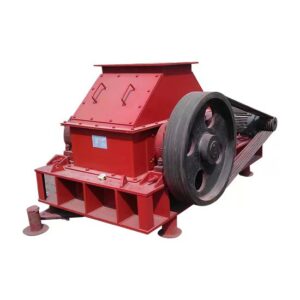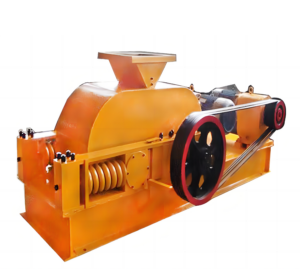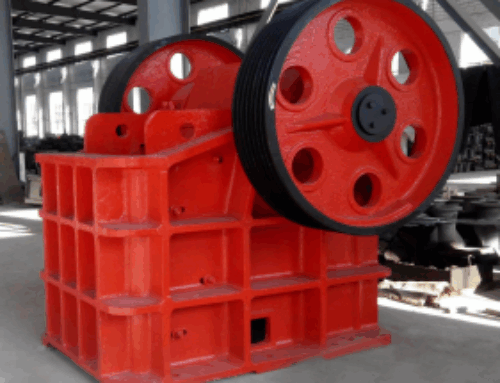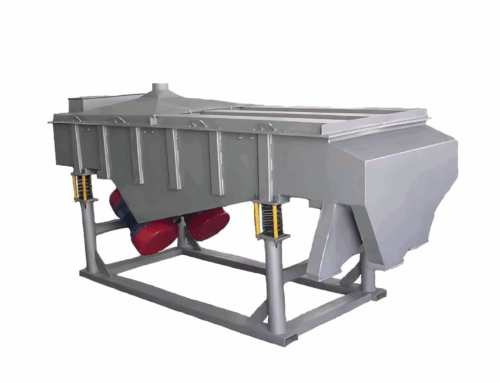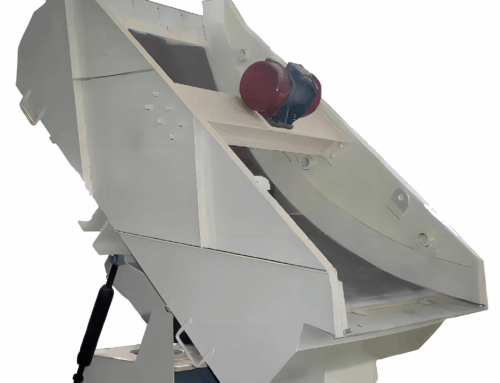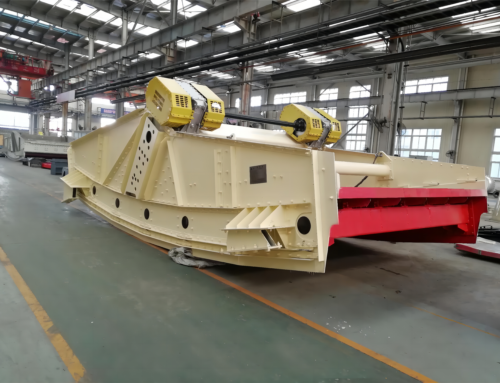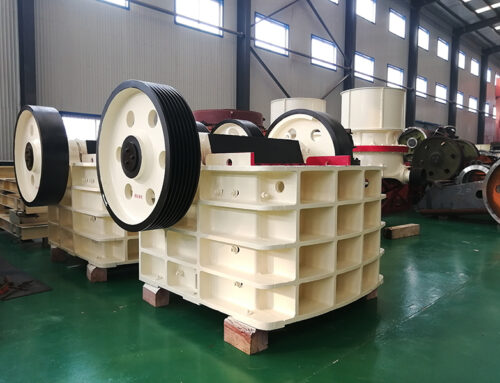In mining, construction, metallurgy and many other industries, the crusher is the key equipment in the material processing process, and its performance is directly related to the production efficiency and product quality. Traditional crusher occupies an important position in long-term industrial production, such as jaw crusher, impact crusher, cone crusher, etc., by virtue of the mature technology, high stability, wide range of applications and low maintenance costs and other advantages, to meet the crushing needs of different materials. However, with the rapid development of science and technology as well as the continuous improvement of industrial production requirements, the limitations of traditional crusher in terms of energy consumption, wear and tear, efficiency and environmental protection have become more and more obvious.
Relatively high energy consumption is a major problem faced by traditional crushers. Fast wear and frequent maintenance is also a major disadvantage of the traditional crusher. As the crushing operation itself is extremely abrasive to the equipment, the key components of the traditional crusher, such as the crushing chamber, liner plate, hammer head, etc., wear out very fast under the long-term high-intensity friction and impact with the material. In terms of crushing efficiency, the traditional crusher is also gradually difficult to meet the needs of modern industrial production. With the continuous expansion of production scale, the requirements for material handling capacity are getting higher and higher, while the crushing capacity of traditional crusher is limited. The following takes you to understand what performance advantages the graded crusher has compared with the traditional crusher.
一.The working principle innovation of grading crusher
As a new type of crushing equipment, the grading crusher has achieved a significant innovation in the working principle, which is significantly different from the traditional crusher. It abandons the single crushing method of the traditional crusher, and innovatively adopts impact, shear, crushing and other crushing methods to work together, thus realising more efficient and finer crushing of materials, and also has the unique function of particle size classification.
When the material enters the crushing chamber of the grading crusher, it will first be impacted by the high-speed rotating crushing teeth or hammer head. These crushing parts run at a very high speed, giving the material a strong impact, so that the material is subjected to a huge external force in an instant, thus the initial crushing occurs. This impact can effectively break down the large materials into smaller pieces quickly, laying the foundation for the subsequent crushing process.
As the material moves through the crushing chamber, it enters the gap between the rolls or blades, where shear begins to play a key role. The rolls or blades shear the material in a relative motion, cutting the material along its weak points. This shearing effect can further refine the particle size of the material, so that the material is more evenly broken.
In addition to impact and shear action, the grading crusher also utilises crushing action to further crush the material. In the crushing chamber, the material will be squeezed and crushed by the crushing parts, through which the internal structure of the material is further destroyed, so as to achieve finer grain size crushing.
While realising the synergistic operation of multiple crushing methods, the grading crusher also realises the function of particle size classification through its unique structural design. Classifier crusher is usually equipped with multi-layer screens or classifiers, the aperture of these screens or classifiers from top to bottom gradually reduced. After the material is crushed in the crushing chamber, particles of different sizes will be separated by gravity and centrifugal force through screens or classifiers of different apertures. The larger particles can not pass through the smaller aperture, will be screen mesh retained in the upper layer, continue to accept the crushing; while the smaller particles can pass through the screen mesh, into the next level or directly discharged into the qualified products. This particle size classification function makes the grading crusher can achieve the dual task of crushing and grading in the same equipment, greatly simplifying the production process.
二.Performance Advantages
1.Significantly increased crushing capacity
Compared with the traditional crusher, the grading crusher has a qualitative leap in crushing capacity. The traditional crusher is limited by its own structure and crushing principle, and is often unable to handle large-size materials. For example, the common jaw crusher, although the size of the feed opening has a certain specification, but for more than its maximum tolerable size of the material, it is necessary to carry out pre-processing, such as artificial crushing or other auxiliary means of crushing. Moreover, even when dealing with materials that meet the feed size, the crushing efficiency of the jaw crusher is relatively low, with a limited capacity per hour.
In contrast, the classifier crusher is equipped with high-strength, high-speed crushing teeth or hammerheads, and these crushing elements are capable of generating powerful crushing force to quickly and effectively crush large materials.
2.Precise particle size control
In industrial production, the precise control of material particle size is crucial, and different production processes often require materials with different particle sizes. The traditional crusher in the particle size control has greater limitations, the size of its discharge is often not uniform, fluctuations in the larger range. For example, during the crushing process of impact crusher, due to the impact force on the material and the randomness of the crushing path, the discharge particle size is difficult to accurately control, and there are often cases where the particle size of part of the material is on the large or small side, which requires subsequent secondary screening and processing, increasing the production cost and time.
The grading crusher achieves precise control of the discharge particle size through its unique internal structure design. It can accurately control the size of the discharged material particle size by adjusting the gap inside the crusher, such as the gap between the tooth rolls and the aperture of the screen. At the same time, some advanced grading crushers are also equipped with intelligent control system, which can automatically adjust the crushing parameters according to the preset particle size requirements to ensure that the particle size of the crushed material always meets the production requirements.
3.Effectively reduce over-crushing
Over-crushing phenomenon is one of the common problems in the working process of traditional crusher. When the material is over-crushed, a large amount of fine powder will be produced, and these fine powders not only increase the difficulty in the subsequent processing, such as screening, conveying and other aspects of the process is prone to cause clogging, but also reduce the quality and added value of the product.
The classification crusher is designed with full consideration to reduce the over-crushing phenomenon. It makes use of the physical properties of the materials, such as compressive strength, shear strength and tensile strength, and adopts reasonable crushing methods, such as shearing and stretching, so that the materials are crushed along their weak parts in the crushing process, avoiding the occurrence of over-crushing. At the same time, the screening function of the grading crusher can also timely separate the materials that have reached the qualified particle size, reducing the residence time of the materials in the crushing chamber and further reducing the possibility of over-crushing.
4.Wide material adaptability
Due to the limitation of its crushing principle and structure, the traditional crusher often has poor adaptability to materials and can only be applied to materials of specific hardness and nature. For example, cone crusher is mainly suitable for crushing materials with medium hardness or above, and its crushing effect is not good for soft materials, such as coal and gypsum, etc., and it is easy to lead to increased wear and tear of the equipment.
Graded crusher, on the other hand, has a wide range of material adaptability, and can handle materials of various hardnesses, whether it is hard granite, quartzite, or softer coal, shale and so on, can be crushed effectively. This is because the grading crusher adopts the principle of synergistic operation of multiple crushing methods, which can automatically adjust the crushing force and crushing method according to the nature and hardness of the materials. For example, when dealing with hard materials, it will increase the strength of impact and crushing; while when dealing with soft materials, it will focus on shearing and stretching to avoid excessive crushing. At the same time, the rolls or blades of the grading crusher are made of special materials and designs, which have good abrasion resistance and corrosion resistance, and can adapt to the crushing needs of different materials. In a building materials manufacturer, the grading crusher can not only efficiently crush hard raw materials such as limestone and sandstone, but also finely crush soft raw materials such as gypsum and clay, which realises multi-purpose use and improves the utilisation rate of the equipment and the production efficiency of the enterprise.
5.Energy saving and environmental protection go hand in hand
In today’s increasingly tense energy and environmental protection requirements are becoming more and more stringent, the energy-saving and environmental performance of the equipment has become an important consideration for enterprises to choose the equipment. Traditional crusher in the energy consumption and environmental protection there are many problems.
The graded crusher has a series of innovative designs in energy saving and environmental protection. In terms of energy saving, it adopts a low-speed and high-torque drive system, which reduces the energy consumption of the equipment during operation. Meanwhile, by optimising the structure of the crushing chamber and the crushing method, it improves the efficiency of energy utilisation, so that more energy can be directly applied to the crushing of materials.
With its excellent performance advantages, the graded crusher has been widely used in many fields, which effectively meets the diversified needs of different industries for material particle size. With the continuous improvement of the performance of the grading crusher, its application areas will continue to expand, providing strong support for the development of more industries.


